The world is undergoing a seismic shift toward renewable energy, driven by a collective understanding of the urgent need to address climate change, reduce greenhouse gas emissions, and transition from fossil fuels to more sustainable energy sources. In this rapidly evolving landscape, energy transition funds have emerged as a vital component for facilitating investments in the green economy. These funds not only enable a faster transition to sustainable energy but also offer attractive investment opportunities for those looking to capitalize on the burgeoning green sector. In this blog post, we will explore market trends, highlight key players such as Greenbacker, and examine the future of energy funding.
Understanding Energy Transition Funds
Energy transition funds are investment vehicles specifically designed to channel capital towards renewable energy and the decarbonization of various industry sectors. These funds typically focus on a diverse range of investments, including:
- Solar and Wind Energy: Developing and operating renewable power plants.
- Energy Storage: Investing in battery technologies and other storage solutions.
- Electric Vehicles (EV) and Infrastructure: Supporting the adoption of EVs and the necessary charging infrastructure.
- Energy Efficiency: Funding innovations in building efficiency and smart grid technologies.
- Carbon Management: Investing in technologies that reduce, capture, or eliminate carbon emissions.
With increasing regulatory support, public policies, and financial incentives promoting green energy, energy transition funds represent a sustainable investment strategy that aligns with both ethical and financial goals.
Market Trends in the Green Economy
1. Growing Investor Interest
Recent years have seen a surge in investment from both institutional investors and retail investors in renewable energy. Factors driving this trend include increasing climate change awareness, the desire for sustainable investments, and the recognition of renewable energy’s potential for high returns. According to BloombergNEF, global investments in energy transition technologies reached a record $501 billion in 2021, with the trend continuing to accelerate.
2. Policy Drivers
Governments worldwide are enacting policies that incentivize renewable energy investments. The U.S. Inflation Reduction Act (IRA) is an excellent example, providing significant tax credits for renewable energy development, including wind, solar, and battery storage. Similar measures are being undertaken in Europe and Asia, creating an overall climate of policy support that is crucial for the growth of energy transition funds.
3. Technological Advancements
Rapid advancements in renewable energy technologies, such as solar photovoltaic (PV), wind turbines, and battery energy storage systems, are reducing the costs associated with clean energy production. Improved efficiency and decreasing prices make these solutions increasingly attractive to investors. Moreover, the rise of smart grid technology and digital innovations allows for better energy management and optimization.
4. Focus on ESG
Incorporating Environmental, Social, and Governance (ESG) considerations into investment criteria has become essential for many institutions. Investors are now scrutinizing how companies manage their environmental impact, leading to the growth of ESG-focused funds and energy transition strategies.
Spotlight on Major Players: Greenbacker
One of the foremost players in the energy transition fund space is Greenbacker Capital. Founded in 2015, Greenbacker specializes in renewable energy investments and has a diverse portfolio that includes solar power, wind energy, and energy storage projects across the United States.
Key Features of Greenbacker’s Model:
- Diversified Investments: Greenbacker operates a portfolio of more than 250 renewable energy projects, emphasizing the importance of risk management and diversification.
- Sustainable Returns: The company aims to generate sustainable, long-term returns for investors while contributing to the energy transition.
- Transparent Operations: Greenbacker prioritizes transparency and accountability in its operations, allowing investors to track the performance and impact of their investments.
- Growth Strategy: As fossil fuel transitions accelerate and climate policies become stricter, Greenbacker continues to seek opportunities in emerging markets and technologies, positioning itself to capitalize on trends in the green economy.
The Future of Green Energy Funding
The future of green energy funding looks promising, with several factors poised to shape its trajectory:
1. Increased Capital Flow
As recognition of climate risk continues to grow, more capital is being directed toward climate-related investments. Institutional investors are increasingly pivoting their portfolios toward renewable energy, driven by the understanding that failing to invest sustainably could expose them to significant financial risks.
2. Expansion of Energy Transition Funds
We can expect a proliferation of new energy transition funds as the green investment landscape matures, with both traditional finance and decentralized finance (DeFi) entering the domain. The proliferation of ESG metrics will guide orientation and goal setting for these funds.
3. Global Cooperation
International cooperation on climate initiatives, such as the Paris Agreement, is likely to strengthen, leading to collaborative funding efforts. Countries may seek to share technology and expertise, incentivizing cross-border investments in renewable projects.
4. Technological Innovation
With continued investments in research and development, technological advancements in renewable energy will likely pave the way for new industries, products, and services, creating multiple avenues for investment.
5. Preservation of Resources
Finally, as awareness of resource depletion grows, energy transition funds will increasingly focus on sustainable practices, emphasizing projects that are not only profitable but also contribute positively to the environment and society.
Conclusion
The rise of energy transition funds marks a significant shift in how investment capital is directed in the quest for a sustainable future. Companies like Greenbacker are leading this charge, demonstrating that it is possible to generate returns while actively participating in the transition to a greener economy. For investors, aligning financial goals with sustainability objectives has never been more viable. As we look ahead, the emerging trends and innovations in the green economy will undoubtedly define the landscape of investment opportunities, making it an exciting time to be a part of the energy transition. The future is indeed bright—and green.


